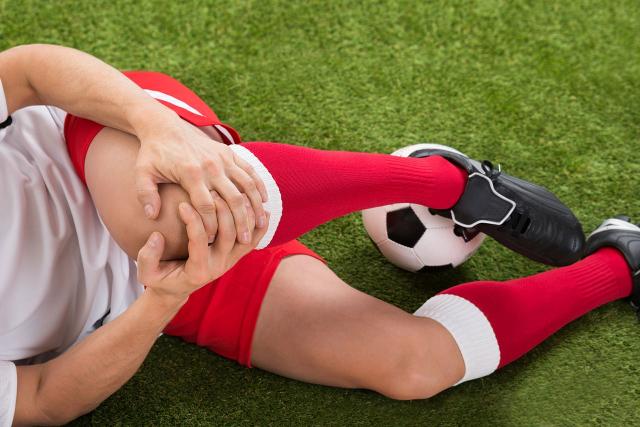If you’ve recently become injured while playing sports and are experiencing pain and swelling, an ultrasound guided cortisone injection might be the most appropriate method of treatment.
Sports injuries can involve any part of your body, but most commonly affect major joints like ankles and elbows or areas that become impacted during contact sports.
Anyone can receive a sports injury, and they can be extremely unpleasant and uncomfortable if left untreated.
What is cortisone?
Sometimes known as a steroid injection, cortisone has been used by orthopaedic professionals since the early 1950s and is considered to be a reliable, safe and effective treatment for a sports injury.
Cortisone is a chemical that is naturally produced by your body’s adrenal gland and released when your body is put under stress.
The cortisone that is injected into the site of a sports injury is synthetically produced to be very similar to your body’s natural product.
The injection serves to reduce inflammation and pain, enabling recovery and the return to your normal activities.
Unlike the illegal steroids you often hear about to enhance sports performance, cortisone is legal and considered safe when administered by a trained professional.
Interestingly, cortisone is not a pain-relieving medication.
However, you will still experience pain relief after receiving it because you might be experiencing pain from inflammation, and the cortisone serves to reduce this symptom.
The positive effects from an ultrasound guided cortisone injection can be noticed within three to four days.
Sometimes, you might experience pain and discomfort directly related to having the injection which can be easily remedied by taking ibuprofen or applying ice to the area.
For the best possible results, you should combine the cortisone injection with rest, appropriately elevating the injured area and not stressing it too much.
You may also receive physical or occupational therapy alongside a cortisone injection to strengthen the area and maximise functionality.
Are there side effects?
Side effects from a cortisone injection are normally manageable.
A cortisone ‘flare’ affects about 2 per cent of patients and happens when the cortisone crystallises and causes more pain and discomfort than before the injection.
The good news is, this side effect is rare and resolves itself quickly.
Whitening of the skin surrounding the injection site or facial flushing is also a potential side effect but is completely harmless.
If you are diabetic, you should discuss this with your medical professional before agreeing to a cortisone injection as the injection can lead to an elevation in blood pressure, presenting risks to a diabetic person.
Can anyone not have cortisone?
You should always speak to your medical professional about your suitability for receiving a cortisone injection. If you are pregnant, planning to become pregnant, breastfeeding or have any pre-existing medical condition, these will need to be declared prior to the injection being administered.
Make an enquiry
Bond Radiology can help in numerous ways if you have experienced a sports injury.
You can book for an ultrasound guided cortisone injection, or enquire about other procedures that might help relieve you of pain and inflammation following a sports injury.
Bond Radiology is at Unit 2, 1 Stephenson Street, Pakenham. Call 5922 2072.








